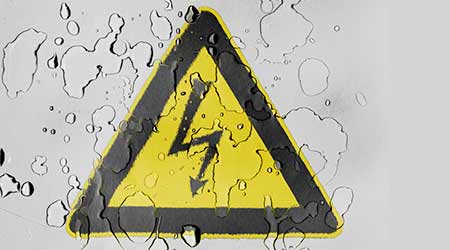
How To Protect Against Electric Shock Drowning
July 5, 2019
Faulty wiring in a pool or a marina can cause electric current to leak into the water, creating an electrocution hazard. An electrocuted swimmer would be paralyzed, likely leading to electric shock drowning (ESD), according to an education campaign from the National Fire Protection Association.
The 2017 NFPA 70, National Electrical Code (NEC) has been revised to improve pool safety and help reduce the risk of ESD. The 2020 NEC includes proposed revisions to include ground-fault protection in marinas and boatyards.
Facility managers with pools on their properties should look for tell-tale signs of damaged wires, such as underwater lights that are not working properly or are flickering. Emergency response procedures should include directions on how to shut off all power to the pool, spa, or hot tub. In outdoor pools, overhead lines should be a safe distance from the pool or any structures such as diving boards. If there is a doubt on the safe distance, NFPA recommends contacting the local utility for an evaluation. And, of course, all corded electrical equipment should be kept at least six feet away from the water.
Facility managers with a marina on their properties should have the dockside electrical system inspected by a qualified electrician once a year, according to the Electrical Safety Foundation International. Ground Fault Circuit Interrupters should be installed on the dock, and tested monthly. In addition, swimming should not be allowed in or around the marina, and marina users should be required to use only UL-Marine Listed power cords, plugs, and receptacles.
Naomi Millán is senior editor of Building Operating Management.
Next
Read next on FacilitiesNet












